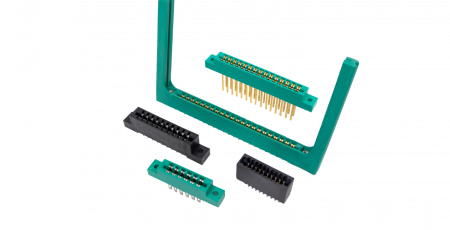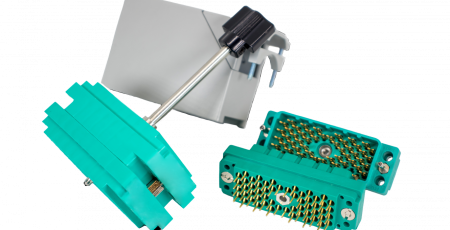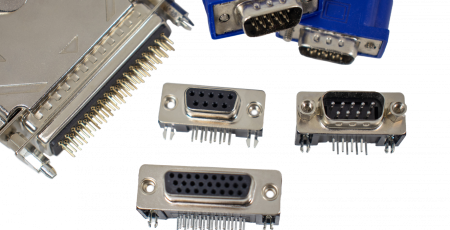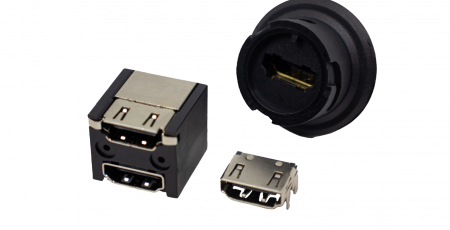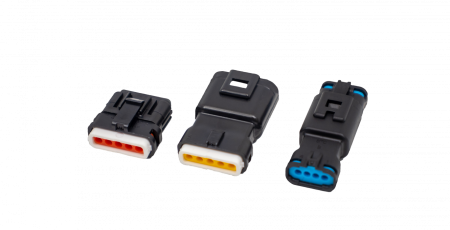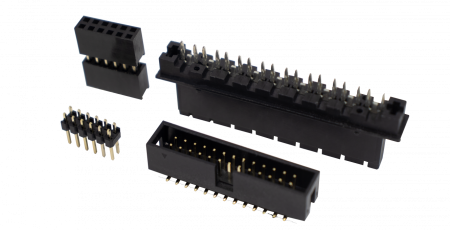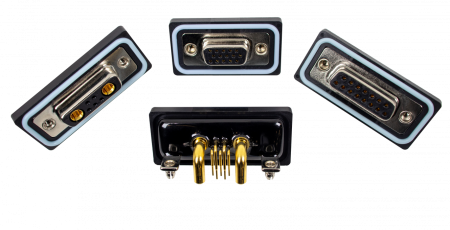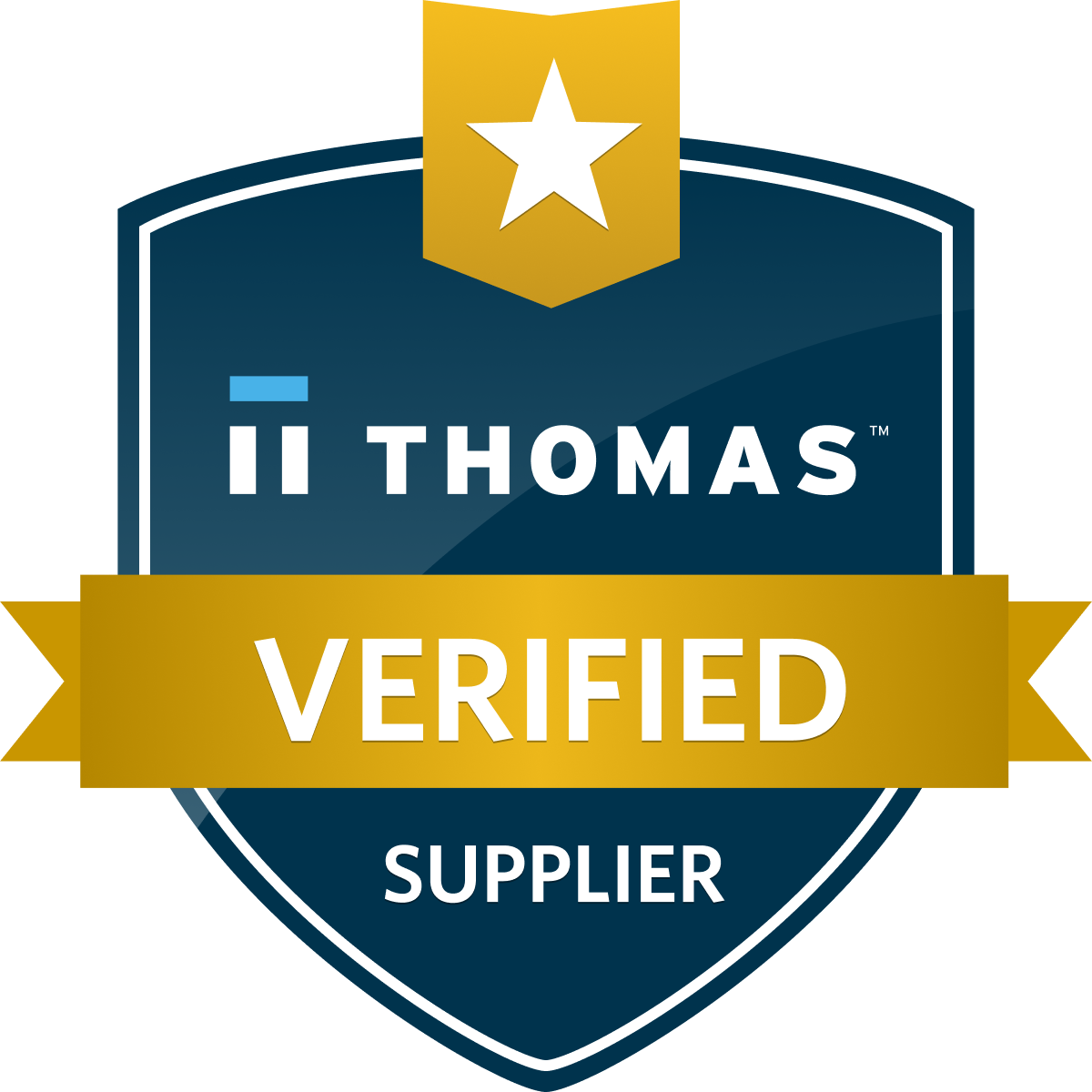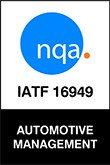Categories
- Card Edge Connectors
- RECTANGULAR CONNECTORS
- D-Sub Connectors
- Machined D-Sub Connectors
- Power Combo D-Sub Connectors
- Parallel Port D-Sub Connectors
- Waterproof D-Sub Connectors
- DB9 Connector
- DB15 Connector
- DB25 Connector
- Vertical PCB D-Sub Connector
- D-Sub Panel Cut-outs
- Cable Wire D-Sub Connector
- PCB D-Sub Connector
- Right-angle PCB D-Sub Connector
- Backshells or Hoods, and Caps for D-Sub Connectors
- D-Sub Connector Housings
- D-Sub Connector Contacts
- Modular & Magnetic Jacks
- USB Connectors
- HDMI Connectors
- INLINE CONNECTORS
- HEADER CONNECTORS
- Spring Loaded Connectors
- Waterproof Connectors
- Cable Assemblies
- Custom Connectors

CUSTOM CONNECTORS - THE VALUE OF AN EXPERIENCED CONNECTOR MANUFACTURER
There comes a time when an engineer will find themself in a situation where standard, off-the-shelf connectors are unable to meet all application needs, but trying to design a custom connector is no small feat. The vast amount of knowledge and industry know-how needed can leave engineers facing significant challenges, and the large costs associated with tooling, prototyping, and production can quickly overwhelm even the best engineers. EDAC, with its years of experience in custom connector design and manufacturing, offers engineers an excellent solution which takes advantage of the latest innovations and prototyping technologies to reduce the time needed to develop new solutions while reducing the costs associated. In this article, learn about the challenges that engineers face when creating custom connectors, what EDAC provides, and why engineers should always use a connector manufacturer they can trust.
The role of connectors
Just as resistors, capacitors, and inductors are fundamental components to all electronic circuits, connectors play a pivotal role, providing the means for circuits to connect to other devices, interfaces, and power sources. It could be argued that connectors are as old as the electronics industry itself, and without connectors no electronic circuit would be possible.
As a result of their essential role in electronics, countless connectors have been designed, providing engineers with numerous configurations, electrical ratings, mechanical capabilities, and target applications. At the same time, many of these connectors have been standardized across the industry to help provide engineers with application compatibility, such as card edge, rack and panel, D-Sub, RJ45 modular jacks, USB, HDMI, inline plug and socket, headers, spring loaded, and waterproof connectors.
However, whether a connector is industry-standard or not, all off-the-shelf connector solutions provide engineers with a low-cost, quick-and-easy option, as there is no need for custom tooling, testing, or manufacturing. Connector companies that manufacture off-the-shelf parts already have the equipment necessary to make the same connector at scale, and at such economies of scale it is unlikely for a custom connector to compete on price.
This economy of scale is particularly important for consumer electronics, such as smartphones and computers, whose design is not essential to the connector chosen. In these applications, many cables have become standardized, such as USB, HDMI, and IEC C13, meaning that most consumer devices will use a handful of specific cables, thus removing the need for specialized custom connectors. While some consumer electronic devices do use custom connectors, these are often the exception and rarely the norm — see Apple chargers and docking stations.
However, there will be applications when off-the-shelf connector solutions simply won’t do, and in these applications a custom connector can mean the difference between success and failure.
Custom connectors – when off-the-shelf just won’t do
As the name suggests, a custom connector is a connector whose design has been customized for a specific application. Custom connectors will either be modified off-the-shelf solutions or an entirely new design not seen on the market.
For example, aerospace applications may require a DB-9 connector for use in serial comms, but the high G forces and wide temperature swings associated with the aerospace industry may require a DB-9 connector with high-impact plastics, locking nuts on connectors, and high-reliability contacts that resist shock and vibration. As standard DB-9 connectors may not suffice in such applications, a custom version can be manufactured following the same basic mechanical layout but with heavily modified components.
One example of where EDAC custom connector solutions have been used was an automotive customer who needed to reduce the labor associated with installing a panel connector. Simply put, the original panel connector was bonded to a PCB via discrete wires, which had to be done using manual soldering — a labor-intensive process. Due to the shock and vibration requirements, the customer was unable to fund a connector solution that allowed for direct soldering to a PCB. As such, EDAC was tasked with creating a 90-degree panel connector that could be directly soldered to a PCB via supporting conventional soldering techniques such as wave soldering. The solution presented by EDAC integrated a custom PCB, header, and bracket that exceeded the customer’s expectation with reduced costs, reduced labor, and improved reliability.
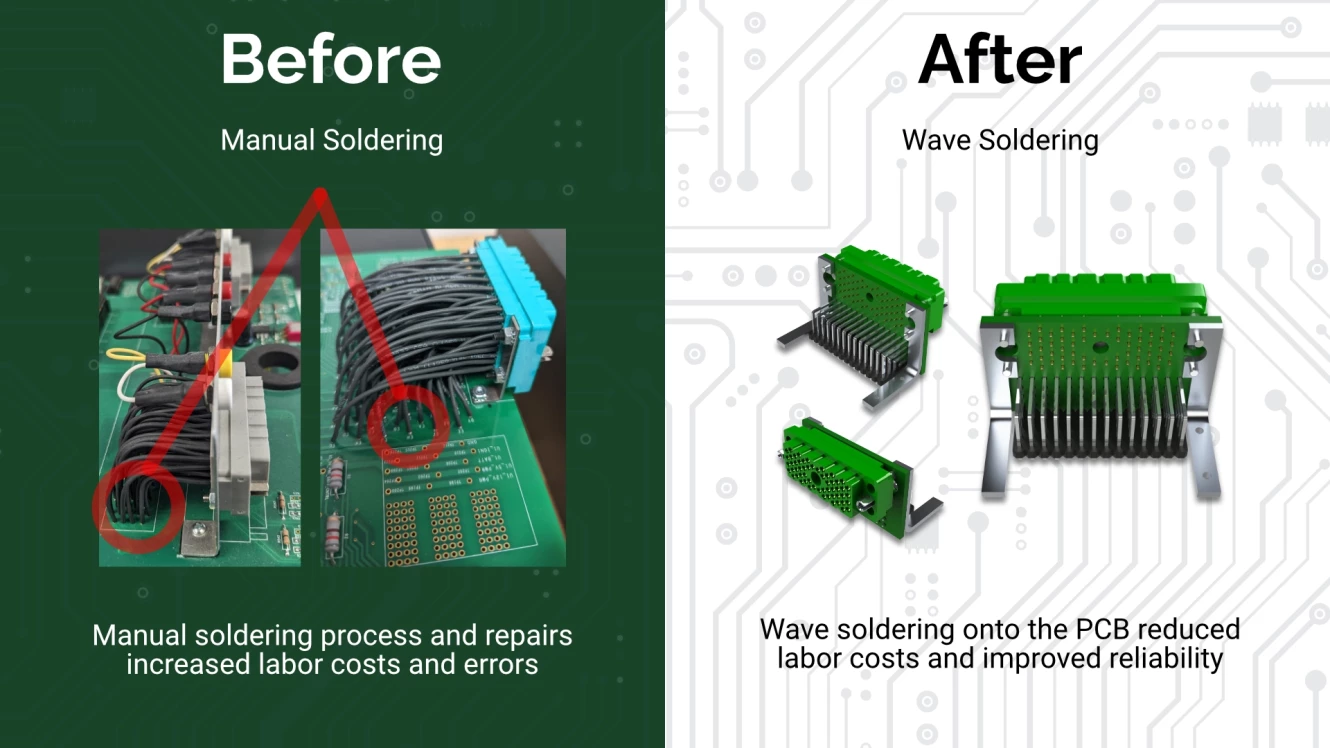
Figure 1 - Customized rectangular rack and panel connector, on the right, used in automotive test equipment to reduce cost, labor, and improve reliability.
Another such example was when Enterprise PBX required a splashproof wireless device with a micro USB port. The connection port needed to allow the wireless device to support seamless communication between different departments and locations, and the connector also needed to fit into existing PBX phones without requiring any wires. As such, EDAC developed a custom micro USB solution that incorporated four charging pods, satisfying all the project’s requirements.
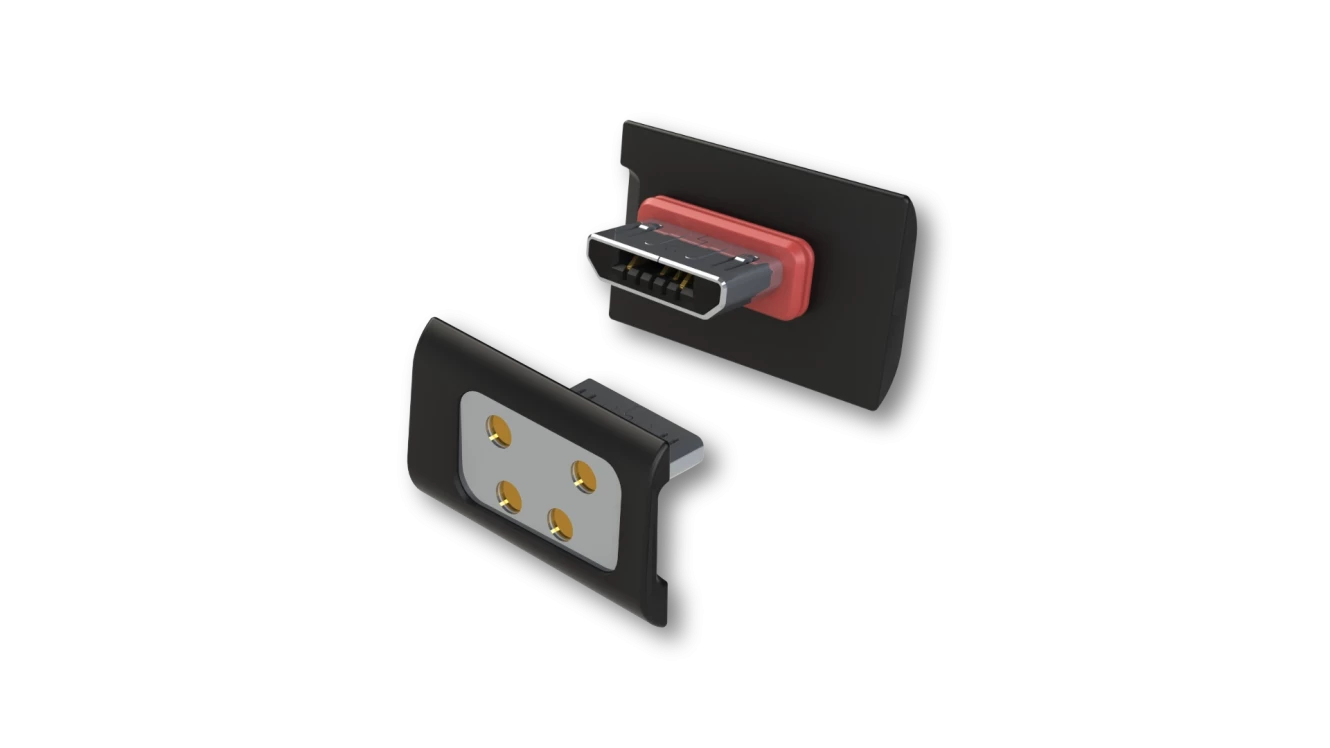
Figure 2 - Customized splash-proof micro USB type B connector
Why may an engineer require a custom connector?
The previous two examples are but a few of the many reasons why an engineer may require a custom connector in their design. Generally speaking, a custom connector may be needed due to specific mechanical, electrical, or environmental requirements.
Mechanical requirements
Strong vibrations are a particular challenge for engineers, as vibrations have a tendency to undo fittings — especially screws and bolts. Strong vibrations and shock can also induce momentary disconnects with connectors that use spring-action contacts, such as those found in RJ45s. In these cases, specialized mating solutions that provide a strong bond capable of resisting vibration will be needed. Excessive force on connectors from mated cables can damage both the connector and the PCB it is mounted to; this can require large fittings, multiple soldered joints, and pressure relief.
Weight constraints from the device application, such as a portable device, may see a need to use lighter materials. This can be especially important in applications such as EVs where energy efficiency is paramount, and the weight of cables and connectors can contribute a significant amount of mass.
Applications that expect numerous mating cycles, where a connector is repeatedly connected and disconnected, will need connectors capable of repeated use. Reconnects can induce fatigue in materials, causing plastics and metals alike to snap, meaning that connectors designed for repeated use need to use materials that are chemically and structurally stable over extended periods of time. Finally, a connector may need to follow a specific aesthetic style, and this alone can justify a custom connector, such as those used in Apple products.
Electrical requirements
Regarding electrical requirements, an application may require a specific number of electrical contacts that are not available in off-the-shelf components. But it is not just the number of contacts that matters, the electrical specification of those contacts is equally important. For example, an application that requires eight contacts could use RJ-45, but if the power requirement for the project exceeds what RJ-45 can offer, then a different connector solution will be needed. Of course, DB9 connectors offer an additional connector with greater power capabilities, but the physically larger size of DB-9 compared to RJ-45 could make it entirely inappropriate — thus introducing mechanical issues.
Not only do engineers need to consider power requirements — voltage and current — but contact resistance is also critical. All materials have a dielectric breakdown voltage, and this limits what a connector can conduct safely. Finally, connectors carrying RF and/or high-frequency signals will need to consider EMI and EMC, as poorly designed parts can interfere with external devices. At the same time, poor EMI and EMC characteristics can also reduce signal integrity of the connector, thus making the connector susceptible to external sources of EMI.
Environmental requirements
Off-the-shelf connectors are unlikely to be used in applications where there is exposure to harsh environments. For example, connectors that will be exposed to the vacuum of space will need to be able to resist outgassing — a phenomenon whereby trapped gas inside a material slowly leaks out, resulting in fatigue and damage.
In environments that expect wide temperature swings, materials not only need to be able to withstand the temperature extremes of that environment but also be able to survive repeated thermal cycles that can cause expansion and contraction. If not dealt with correctly, repeated thermal cycles can induce mechanical stress, resulting in fatigue and cracking.
Some environments can even be exposed to dust, moisture, and corrosive compounds. In these environments, a connector will need to be able to resist the ingress of dust and moisture, as well as be manufactured from chemically resistant materials. Connectors used in specific industries, such as food and medical, may even require connectors made from specific materials that are not biologically harmful.

Figure 3- Reference sheet for mechanical, electrical, and environmental considerations when choosing a connector
Fully custom vs. partly custom
When it comes to choosing between a fully custom connector or a partly custom connector, engineers need to take several factors into consideration. As previously described, fully custom connectors provide engineers with the greatest degree of flexibility, allowing choice for the number of contacts, the material used to house the connector, and how the connector mates. In addition to these advantages, fully custom connectors can also be designed with future-proofing in mind, ensuring that as designs change to account for new features, the connector will still be usable. A fully custom connector is also designed around a specific application, perfectly adapting to that solution.
On the flip side, custom connectors partly take advantage of much faster development times, as the majority of the connector design has already been done. Such connectors also have industry experience behind them, with connector manufacturers having all the equipment needed to construct such connectors. While the material selection may differ, the CAD files, molds, and tooling needed will likely be identical, thus significantly reducing setup costs. Finally, engineers using partly custom connectors can utilize off-the-shelf parts during prototyping while connectors are being manufactured, allowing for designs to be verified for functionality at earlier stages.
The challenge of custom connectors
Creating custom connectors is an extremely complex process, especially when considering that connectors are an industry in their own right with hundreds of companies investing millions into R&D just to get connectors to work. For example, an engineer tasked to create a customized control unit used on a buoy may require a custom cable, especially if the supporting infrastructure is decades old using proprietary power and communication technologies.
By far the biggest challenge faced with custom connectors is the immense cost of custom tooling, molding, and testing. A large portion of connectors are manufactured using injection molding, and while this is a low-cost manufacturing technique at volume, molds can well exceed $100,000. A single design error in a mold can be disastrous to the overall project cost, and this design error can be difficult to spot before the connector has gone through its first production cycle. Prototype molds can be produced but may not truly reflect the final design, and an exhaustive amount of testing is needed for both prototype and final parts.
Before a connector can even enter the prototyping stage, a vast amount of time is needed to draw up a specification, verify the specification, design the connector, and develop in-house prototypes. This entire development cycle can loop multiple times, and this increases the cost of R&D significantly.
To make matters worse, engineers with limited experience in the field of connector design will likely make numerous trivial design errors, with one in particular being manufacturing feasibility. If these design errors are not picked up during the early stages of development, they can ripple into the final design, requiring the entire design process to restart from scratch.
Overall, trying to develop a custom connector solution without experience in connector design and manufacturing can lead to a multitude of design errors, large sums of money wasted, and significant project delays.
The importance of an experienced connector manufacturer
In order to eliminate the troubles of connector design, it is recommended that engineers turn to experienced connector manufacturers. While the cost of hiring a dedicated custom connector manufacturer may seem high at first, the perceived larger upfront fee presented by experienced connector manufacturers will save money for the project over the long run.
To start, connector manufacturers will have a fundamental understanding of the manufacturing process, ranging from material selection to the types of molds used. This knowledge not only helps to eliminate unnecessary design errors from the start but also allows the manufacturer to determine the feasibility of a project before it has even begun.
Using an experienced connector manufacturer also introduces industry know-how and trade secrets only known to that manufacturer. This helps to introduce cost-effective measures into the design of the custom connector, both during development and deployment. Simultaneously, experienced connector manufacturers will likely have worked in most, if not all, applications and environments. As such, the manufacturer can provide engineers with suitable choices for material and connector style that have been proven in the field. For example, an experienced manufacturer can identify all aspects of an environment — including thermal characteristics, air pressure, humidity, and corrosion — thanks to their past experiences in manufacturing other connector solutions.
EDAC – A connector company with experience
As a global leader in interconnect solutions, EDAC has almost 60 years of experience in the field of connector design and manufacturing, spanning all applications and industries including aerospace, automotive, medical, industrial, and consumer. By leveraging EDAC’s engineering capabilities, customers are able to expedite their projects — reducing time to market and utilizing connector solutions based on proven technologies.
To ensure the success of any project, EDAC approaches customers as a partner, aligning its goals with those of the customer. By doing so, EDAC is able to provide the passion and drive needed to accelerate project times, introducing customers to EDAC’s wealth of knowledge in connectors, materials, and design considerations.
Every individual contributing to a project — whether it is as a part of the supply chain, marketing, development, or sales — is equally important, and EDAC fully recognizes this. EDAC excels in ensuring that all project participants are provided with the best possible support.
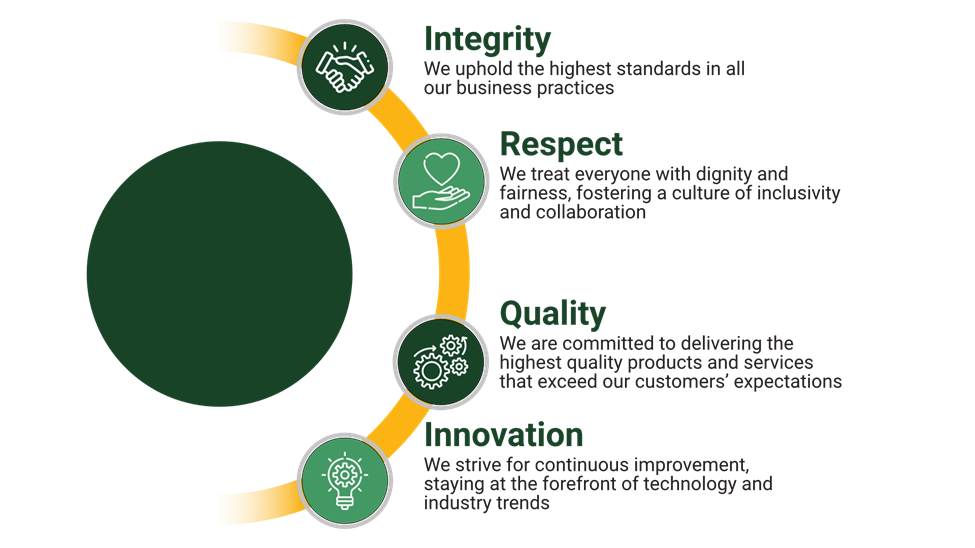
Figure 4 - Integrity, respect, quality, and innovation help foster long-term relationships with our partners
Finally, EDAC continuously invests in new technologies, process improvements, and research to not only better its capabilities as a connector manufacturer but to offer customers the latest breakthroughs in the field of engineering.
What EDAC brings you?
When working with EDAC, customers are provided with fully committed engineering support from concept to deployment. EDAC engineers will assess the requirements for a connector, determine the environment that the connector will operate in, provide a selection of the best options for customers, and then see the design and manufacturing of that connector until its eventual use.
As connectors are 3D parts whose operation depends on their shape, EDAC has invested in numerous 3D technologies, including scanning and printing. These not only allow EDAC to rapidly produce prototypes but also help accelerate connector design by providing EDAC engineers with the latest design tools including virtual 3D environments where new connectors can be designed. At the same time, customers can more quickly obtain pre-production samples that will enable them to handle parts, generate conceptual product images, and recognize challenges before committing to production runs.
EDAC demonstrates confidence in its ability to design the perfect connector solution by diagnosing the root problem to generate the best part prototypes for customers. By doing so, customers can make decisions at earlier stages, recognize what they need, and save significant amounts of money which can be used for other essential design work.
Finally, EDAC’s use of rapid prototyping technologies enables customers to have first-article samples in as little as four weeks. Once customers are happy with the pre-production parts, finished connectors can be delivered in as little as 12 weeks from receiving the first prototypes.
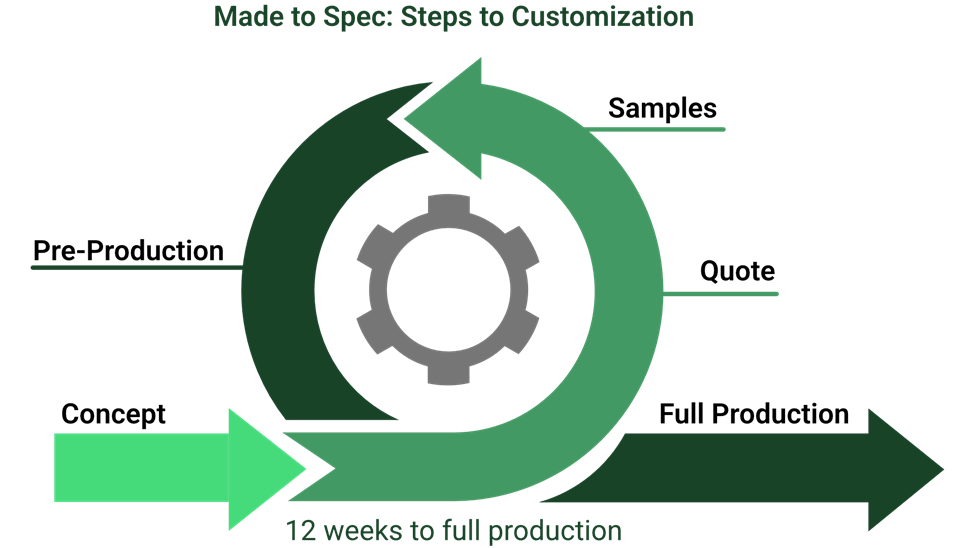
Figure 5 - Custom connector timeline infographic for EDAC Inc
What can EDAC do if your existing manufacturer has gone end-of-life or obsolete?
Having a connector supplier advise a customer that a supplier-specific connector will no longer be available will create a whole set of problems for design engineers, especially for designs that are safety- and/or mission-critical. Trying to replace an obsolete connector is no small feat, and sourcing old stock can be challenging.
To help customers deal with these scenarios, EDAC is able to take on the role as either an alternative source supplier or an entirely new primary supplier. Connectors that are no longer manufactured can be customized by EDAC’s services, ensuring that no design is without a source of connectors, and the combination of EDAC’s customization and technical capabilities can even provide customers with improved varieties.
By leveraging EDAC’s abilities, customers can strengthen their supply chain and create a safety net, knowing that their connector requirements will always be met.
Conclusion
Overall, off-the-shelf connectors are excellent for many applications, as they are readily available, low-cost, and well-established. However, not all applications can utilize these connectors, especially in environments and industries that experience extremes.
Custom connectors offer engineers the ultimate solution — being able to adapt to any environment and industry — but the expensive nature of connector design and prototyping can introduce costly design errors capable of causing massive delays in product development. Even custom designs based on pre-existing connector solutions can be difficult to get right, especially when trying to select materials and manufacturing processes.
As such, it is always recommended that those needing custom connector designs should seek out connector manufacturers with experience to eliminate the headaches associated with creating a connector from scratch. With almost 60 years of experience, EDAC is able to provide customers with some of the industry's best connector technologies, capable of being used in all environments and applications.
By using EDAC’s services, engineers can ensure the success of their projects, and just like the connectors manufactured by EDAC, the connection formed between EDAC and its customers lasts for decades.
Connect with us… Experience makes the difference.






